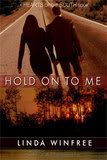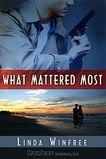What Lies Beneath
"Subtext is content of a book, play, film or television series which is not announced explicitly by the characters (or author) but is implicit or becomes something understood by the reader / viewer as the production unfolds."
Recently, Joan has been sharing what she's learning from different workshops and classes. When I read her posts or talk with her, I'm always amazed by what I still haven't learned about the craft of writing.
Then I step into my classroom, where I teach literature and writing, and everything I still haven't mastered gets hammered home again. (I'm sure y'all get tired of hearing about my students and everything we do in my classroom! I swear, it's all I ever talk about here.)
See, I thought I knew all about including subtext in what I write. I'd even naively written an article on how to use dialogue to build subtext (I never subbed it anywhere or even put it up on my website, but I wrote it).
But.
I don't think I really had a handle on how subtext should be layered through a book. One of my favorite examples for teaching subtext or talking about how to write "hidden meaning dialogue" comes from Arthur Miller's The Crucible, Act 2, Scene 1:
Proctor: You ought to bring some flowers in the house.
Elizabeth: Oh! I forgot! I will tomorrow.
Proctor: It's winter in here yet . . .
Simple conversation between a husband and wife, right? Sure. Except Proctor's talking about more than the lack of flowers when he says "it's winter in here yet." Lurking beneath his words is the idea that Elizabeth remains cold to him because of his own infidelity. The simple exchange builds to the later confrontation in the same scene when Elizabeth realizes Proctor has been alone with his former mistress and not told her. The subtext here heightens the tension of that later exchange.
I'd used this and what I'd seen lurking beneath the surface in other plays to convince myself I really "got" the use of subtext. But, oh, was I wrong . . .
This week, my 11th graders and I have been taking apart Kate Chopin's The Awakening. It's a novel from the late 1800's about a woman trapped by societal strictures and an unhappy marriage. Chopin is a Realist, which means she tends to give an objective view of events -- almost like a snapshot of what's going on, basic details on the surface, with the reader left to interpret what's going on beneath the action and dialogue.
And, trust me, there's a lot going on.
So far, Chopin has this working beneath the surface: details of an unhappy marriage, the husband's control freak and passive aggressive nature, the burgeoning desire between the protagonist and another man, the protagonist's growing self-awareness as well as the perfectionism that tortures her.
My students tend to read on the surface, looking at plot and maybe character. Sometimes, I think as a writer, I get stuck in those surface items -- do I have goals and motivations and conflicts for each character? Do I have enough conflict? Does each event further or resolve said conflicts? Because I think I have those elements mastered and present, I forget there's a completely different side to my story -- what goes unsaid.
Joan is going through detailed edits on her MS. I'm looking at a WIP (which has been in progress for way too long), trying to figure out if every scene furthers the underlying meaning of my novel. It goes back to tightening, I think -- does every word, every sentence, every scene underscore that underlying meaning? Am I showing what lies beneath the basics of plot and character?
The vastness of what lies beneath the basics of craft scares me, simply because I know I'm nowhere near mastering a fraction of it. I wonder if I ever will. I wonder if anyone ever does.
Have you considered what lies beneath your own story? How do you highlight that? Which books and authors make great examples of the skillful use of subtext?
***
Next Friday -- What I'm Learning about Plot Braiding from Harper Lee's To Kill a Mockingbird.
Recently, Joan has been sharing what she's learning from different workshops and classes. When I read her posts or talk with her, I'm always amazed by what I still haven't learned about the craft of writing.
Then I step into my classroom, where I teach literature and writing, and everything I still haven't mastered gets hammered home again. (I'm sure y'all get tired of hearing about my students and everything we do in my classroom! I swear, it's all I ever talk about here.)
See, I thought I knew all about including subtext in what I write. I'd even naively written an article on how to use dialogue to build subtext (I never subbed it anywhere or even put it up on my website, but I wrote it).
But.
I don't think I really had a handle on how subtext should be layered through a book. One of my favorite examples for teaching subtext or talking about how to write "hidden meaning dialogue" comes from Arthur Miller's The Crucible, Act 2, Scene 1:
Proctor: You ought to bring some flowers in the house.
Elizabeth: Oh! I forgot! I will tomorrow.
Proctor: It's winter in here yet . . .
Simple conversation between a husband and wife, right? Sure. Except Proctor's talking about more than the lack of flowers when he says "it's winter in here yet." Lurking beneath his words is the idea that Elizabeth remains cold to him because of his own infidelity. The simple exchange builds to the later confrontation in the same scene when Elizabeth realizes Proctor has been alone with his former mistress and not told her. The subtext here heightens the tension of that later exchange.
I'd used this and what I'd seen lurking beneath the surface in other plays to convince myself I really "got" the use of subtext. But, oh, was I wrong . . .
This week, my 11th graders and I have been taking apart Kate Chopin's The Awakening. It's a novel from the late 1800's about a woman trapped by societal strictures and an unhappy marriage. Chopin is a Realist, which means she tends to give an objective view of events -- almost like a snapshot of what's going on, basic details on the surface, with the reader left to interpret what's going on beneath the action and dialogue.
And, trust me, there's a lot going on.
So far, Chopin has this working beneath the surface: details of an unhappy marriage, the husband's control freak and passive aggressive nature, the burgeoning desire between the protagonist and another man, the protagonist's growing self-awareness as well as the perfectionism that tortures her.
My students tend to read on the surface, looking at plot and maybe character. Sometimes, I think as a writer, I get stuck in those surface items -- do I have goals and motivations and conflicts for each character? Do I have enough conflict? Does each event further or resolve said conflicts? Because I think I have those elements mastered and present, I forget there's a completely different side to my story -- what goes unsaid.
Joan is going through detailed edits on her MS. I'm looking at a WIP (which has been in progress for way too long), trying to figure out if every scene furthers the underlying meaning of my novel. It goes back to tightening, I think -- does every word, every sentence, every scene underscore that underlying meaning? Am I showing what lies beneath the basics of plot and character?
The vastness of what lies beneath the basics of craft scares me, simply because I know I'm nowhere near mastering a fraction of it. I wonder if I ever will. I wonder if anyone ever does.
Have you considered what lies beneath your own story? How do you highlight that? Which books and authors make great examples of the skillful use of subtext?
***
Next Friday -- What I'm Learning about Plot Braiding from Harper Lee's To Kill a Mockingbird.







0Comments:
Post a Comment
<< Home